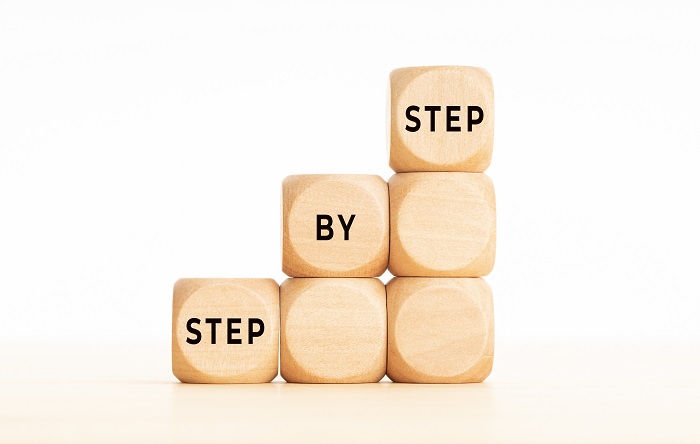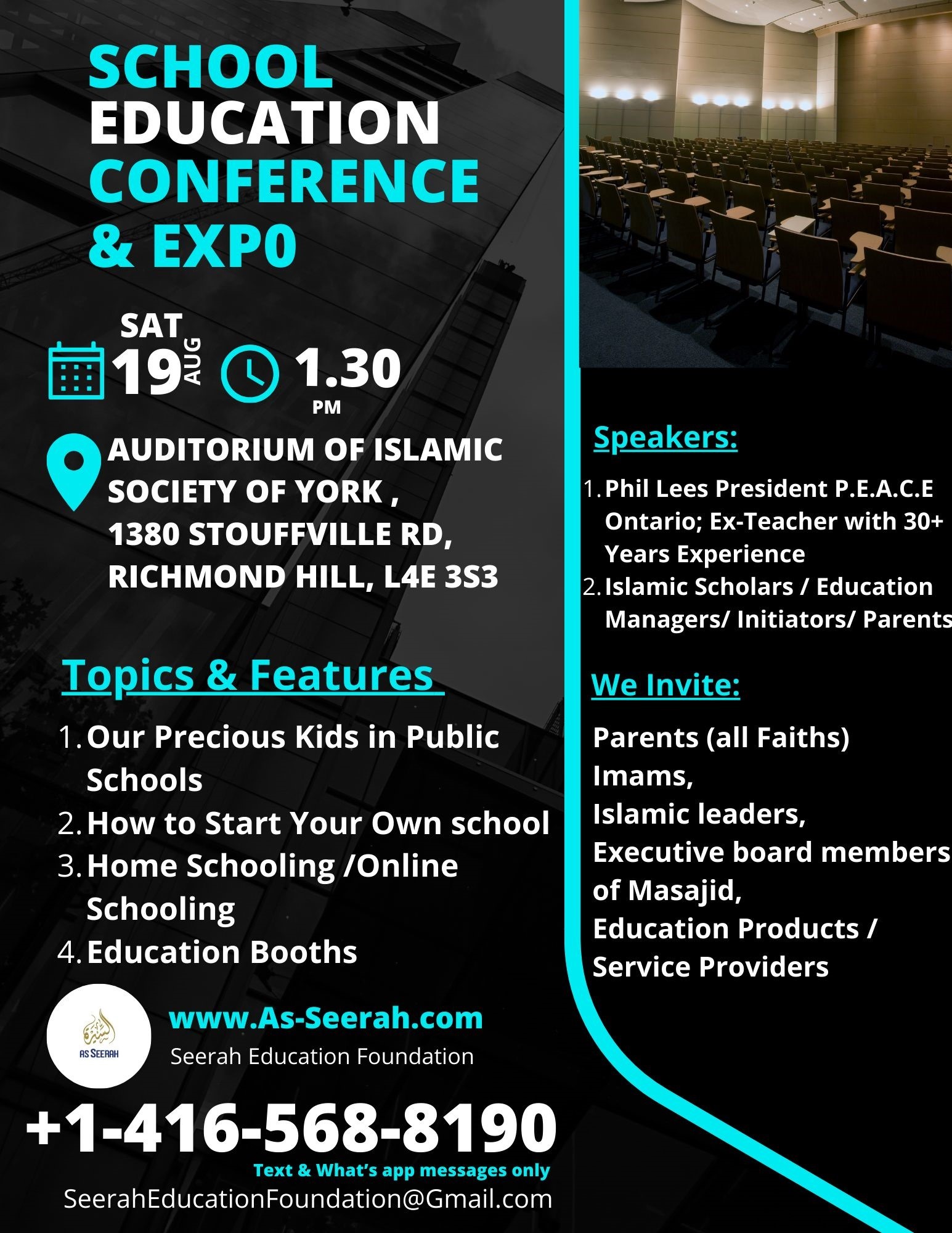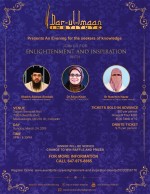SYED JAWED ANWAR
First Published: Muslims Weekly, June 5, 2004, Issue No.#222
WESTERN secular education is directed at the gathering of information. In contrast, Islamic scholars and educators consider the main purpose of education to be the character building. Therefore, fashioning each child with good etiquette and polishing the character was the focus of the primary education.
Al-Qur’an is the fundamental book, and acquiring Qur’anic education is a Farde Ain (mandatory for all). Early childhood is the best time for learning languages and for memorization. Therefore, in primary classes, a student was not given any other books until he or she completed the reading (Nadira) of the Qur’an and memorized at least a few surahs. The memorization of the entire Qu’ran or portions of it and of duas (prayers) was integral to the primary school curriculum. Most of the non-Arab, Islamic scholars who secured intellectual achievements were those who memorized the Qur’an in their early childhood.
The syllabus of primary school was based on the books that teach about Allah and Rassol (the messenger of Allah) (s.a.w.) and short stories written to improve the morale of students. First of all, students were given copies of the book Qaeda Bughdadi which taught the Arabic alphabets and word structure required to facilitate the reading of Qur’an. After that, students had to study the thirtieth Juz (part) of the Qur’an, and then the entire Qur’an. No other book preceded completion of reading the Qur’an. It is a proven fact that simply reading the Qur’an makes a deep impact in building the character of a child’s personality.
After the Qur’an, there was a simple book, Karima, of morals and etiquette that were memorized. Good storybooks were given. How to do cleaning, Wadoo (ablution), and prayer were other main parts of the primary education. Generally a student completed the primary education by age seven or eight.
From the period of Sultan Mahmood Ghaznavi (1030) to the period of the British East India Company (1835), Farsi was the official and most popular language of South Asia (Pakistan, Bangladesh, and India, etc). Farsi was also the language of the world’s dominating powers of the time, and the Farsi language covered a larger area of Muslim control. Muslim India was the next country of Farsi language after Iran. In the Farsi language Madrasah is the name given to the Farsi education, resembling a combination of modern-day, junior high school (primary school), high school, and at least two to four years of college education, and there was no separation of deeni and worldly knowledge. The Fiqah (Islamic Jurisprudence of the time), moral education, history, literature, writing, calligraphy, correspondence, reading techniques of all types of handwriting, and mathematics were the essential elements of the curriculum. After completion of the Farsi Madrasah, a student was eligible to do any kind of job. These Madrasahs were providing the best talents to all the departments of government and court of the time.
The duration years of the Farsi education were not defined but varied from student to student. In a letter, Mirza Daag Dehlavi (1832-1907) writes that he completed his Farsi education in four years.
The general system was as follows:
1. After the completion of Qur’an, a student could start the Farsi education.
2. Students generally memorized books written in poetry form for easier memorization.
3. Students learned by listening, reading, and memorizing.
4. Each student was assigned individualized lessons for a book-based grading system. Whenever one would successfully finish one book, he or she would be given another book.
5. Afternoon was the time for improving writing skills and mathematics.
Generally, a new book was started on Wednesday. Prophet Muhammad (saw) said that “the work that will be started on Wednesday must be finished successfully.” The Arabic language was the language used in acquiring the highest education. The student completing the Arabic Madrasah was called Alim and was entitled to the title of scholar and teacher.
The syllabus of Arabic Madrasah was:
1. Books that give basic, detailed and deep knowledge of Fiqah (Islamic jurisprudence that was the law of the land of the time).
2. Brief, extremely summarized books specially written for the syllabus. The advantages of these brief books were: A. Students had to work hard and became habitual to do research. B. It opened the minds and developed inquiring capabilities of the students. C. It involved each student in a deep thinking process.
3: One specialized and masterpiece book of every subject; that made other books of the same topic easier to understand.
4. Philosophy and logic were included later in the syllabus to develop more critical and intellectual capabilities in the students. There were three types of books: 1. short, 2. medium, and 3. detail. There were different methods to teach them: 1.cold method, 2. method of thinking and debating, and 3. the research method.
This system was producing the kind of scholars who were good thinkers, critics, and researchers and who had an in-depth and comprehensive knowledge of given subjects. The present Western education system prevalent in the post colonial entire Muslim world has not produced a single person of that caliber. The Western and borrowed education system in the Muslim world is simply providing a blind follower (Muqallid), not a researcher (Muhaqqiq) and reformer (Mujaddid).
Students had to work diligently in study and research before sitting with the teacher in the next day’s class. Students debated each other and raised questions and tried to get answers in their hostel/residential rooms. Everyone had to participate in the class room discussion. The silent student was considered “dumb.” After this method of education, there was no importance and need of examination. Every student had to produce his capability of scholarship in the classrooms.
This curriculum was established in South Asia for centuries with minor changes according to the time and requirements. However, Mullah Qutubuddin was the first person that felt the need of major change in the syllabus, and he introduced one book on various subjects of the time. He was the resident of Sahali, district Sultan Pur, Awadh, India and was a teacher in a Madrasah. He was killed for reasons unknown. After his death, his family moved to Firangi Mahal, Luckhnow. His son Mullah Nizamuddin Sahalwi (d.1747), who was also a great scholar and teacher, revised the syllabus again and put two books (practically there were more than two books on every subject and skill) on various subjects of the time. This syllabus was called “Daras e Nizami” and became the most popular one. As a matter of fact, it was a revolutionary change in the syllabus; however, the system of education remained same. This was the time when Muslim intellectuals adopted the habit of reading philosophy. There were about 100 books in “Dars e Nizami, in which there were 44 books on philosophy.
The knowledge of philosophy was already being Islamized by Abu Nasar Farabi (950), Hakim Bu Ali Sina (1037), Sheikh Shahabuddin (1183), Fakhruddin Raazi (1209), Saaduddin Masood Bin Omar Tazzazani (1389), Qutbuddin Shirazi (1501), Mullah Sadra (1640), Mir Baqar Damad (1630), and many other scholars and intellectuals of the Muslim world.
“The seed of the tree of this education system was sown by Mullah Fathullah Shirazi, and the tree was formed by Mullah Nizamuddin,” said Shah Suleman, Sajjada Nashin Phulwari Sharif, Patna.
A person not completing Daras e Nizaami would not be called “Alim”; however, many people have a difference of opinion and do not want to confine the word “Alim” to a particular syllabus and system. This syllabus, however, spread like a wild plant all over South Asia. Interestingly, all the sects, and followers of different religious schools followed the same “Daras e Nizami” with minor amendments. The best thing about this syllabus was its comprehensiveness and unity of deeni and worldly knowledge. This system provided personalities of versatile quality. Till the last period of British occupation, this Madrsah system led to personalities like Sir Syed Ahmed Khan, Nawab Muhsinul Mulk, Maulana Shibli Nuamani, Maulana Syed Suleman Nadavi, Maulana Abul Kalam Azzad, and Maulana Syed Abul Aala Mawdudi. These scholars had a comprehensive and versatile knowledge, and their writings showed them to be experts on various subjects.
Colonel William. H. Sleeman (1809 - 1856 A.D.) studied the educational condition of Indian Muslims concluded, "Perhaps there are few communities in the world among whom education is more generally diffused than among Muhammadans [Muslims] in India."
"He who holds an office worth twenty rupees a month commonly gives his sons an education equal to that of a prime minister. They learn, through the medium of Arabic and Persian languages, what young men in our colleges learn through those of Greek and Latin-that is grammar, rhetoric, and logic. After his seven years of study, the young Muhammadan binds his turban upon a head almost as well filled with the things which appertain to these branches of knowledge as the young man raw from Oxford-he will talk as fluently about Socrates and Aristotle, Plato and Hippocrates, Galen and Avicenna; (alias Sokrat, Aristotalis, Alflatun, Bokrat, Jalinus and Bu Ali Sena); and, what is much to his advantage in India, the languages in which he has learnt what he knows are those which he most requires through life."
There were a lot of qualities in that curriculum; however, there were few basic flaws of the curriculum:
1. The Qur’an and Hadith are the fountains of knowledge of Islam; however, there were not more than two books on each, and only portions of these books were taught. This is the basic shortcoming of the syllabus.
2. Social sciences, history, geography, and literature had a great importance. In Daars e Nizaami, there is not a single book in either of these subjects. According to an education critic, “The students of this system have no insight of history.”
3. The literature is the beauty of language; however, the first requirement is the comprehensive and deep knowledge of language. The syllabus on Arabic language has failed to produce experts of language with few exceptions.
(This is a series of columns for the understanding of the history of centuries old Madrasa and Islamic Education System in South Asian perspective published in the Muslims Weekly, New York, USA, in series of the weekly column “Personal Notes.” Syed Jawed Anwar can be reached at jawed@seerahweest.com)






